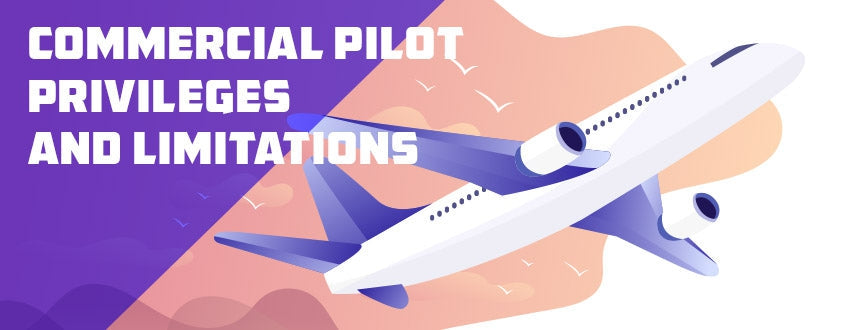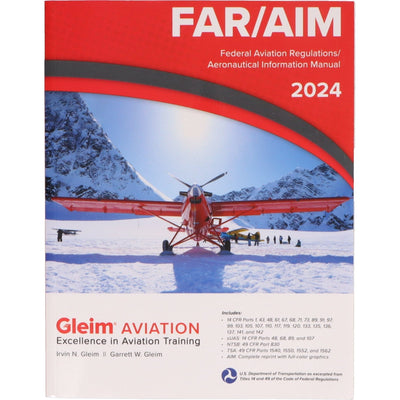Imagine you’re a freshly minted commercial pilot. Congratulations! One thing on the mind of many newly certified commercial pilots is, “How can I use this new certificate to earn some money?”
Excellent question. Today we will explore the privileges and limitations of a commercial pilot. The nuances can get a bit confusing, so consider this a timely refresher on the do’s and don’ts of using your commercial pilot’s license to generate income.

Commercial Pilot Privileges
We’ll start out with the fun stuff – the privileges. Your commercial pilot certificate authorizes you to:
1. Carry persons or property for compensation or hire
This is one of the main reasons you earned your commercial license in the first place. You can now charge for your piloting services whether you are carrying people or property.
2. Act as pilot in command for compensation or hire
You can charge for your piloting services both as first officer and as a pilot in command.
3. Act as a pilot for compensation or hire a “dry lease” flight
If someone else is supplying the aircraft, you can charge for your piloting services on board that aircraft.
4. Engage in operations listed under the Part 119 exceptions
With your commercial pilot certificate, you are eligible to perform certain operations that fall under the Part 119 exceptions. You aren’t required to obtain a Part 121 or Part 135 certificate to engage in the following operations:
- Student instruction
- Nonstop commercial air tours (subject to specific criteria outlined in Part 119)
- Ferry or training flights
- Aerial work operations including:
- Crop dusting, seeding, spraying, and bird chasing
- Banner towing
- Aerial photography or survey
- Fire fighting
- Helicopter operations in construction or repair work
- Powerline or pipeline patrol
- Sightseeing flights conducted in hot air balloons
- Nonstop flights within 25-mile radius of takeoff location for conducting intentional parachute operations
- Helicopter flights within 25-mile radius of takeoff location (subject to specific criteria outlined in Part 119)
- Emergency mail service
5. Fly private carriage flights
It’s important to understand the difference between “common carriage” and “private carriage” because private is allowed but common is not unless you get a commercial operation certificate.
The broad answer according to the FAA is that a private carriage flight is only available to “one or several selected customers, generally on a long-term basis.” Because it is so select and limited, private carriage is not advertised. Common carriage is available to anyone and is usually advertised or promoted by agents.
Read over the FAA’s advisory circular on private carriage versus common carriage for more details. This is one of the more confusing and hard-to-define areas of commercial piloting, so don’t be afraid to ask around and if necessary, seek legal advice if you run into a situation that you are uncertain of.
Commercial Pilot Limitations
We know what we’re allowed to do as a commercial pilot, and we have some ideas for how to generate income. Now let’s discuss the limitations:
1. Non-instrument rating limits on passenger flights
Commercial pilots without an instrument rating have some limitations on the types of passenger flights they are allowed to make. If you do not have your instrument rating, you cannot carry passengers for hire more than 50nm from the point of departure. You are also not allowed to carry passengers at night. The moral of the story is to earn your instrument rating so that this limit doesn’t apply to you.
2. Type of medical certificate
You can technically earn a commercial pilot certificate with a 3rd class medical. The caveat is that your 3rd class medical certificate doesn’t allow you to fly for hire. This means that if you want to exercise the full privileges of your commercial license and be able to make money flying, you will need to have a 2nd or 1st class medical certificate.
3. Offering services that require a Part 121 certificate
Part 121 services include anything that would qualify as a scheduled air carrier. This mainly applies to regional and national airlines. It’s unlikely that you would accidently engage in activity that would constitute a Part 121 service.
4. Offering services that require a Part 135 certificate
Part 135 services include commuter and on-demand operations. Corporate and government flights are examples of Part 135 operations. These charter operations are where some commercial pilots can get sucked into a gray area and unwittingly engage in an activity which the FAA deems to fall under Part 135. Read up on Part 135 so you know what is and is not included under its’ purview.
5. Working for an unlicensed charter operation
If your plan is to go fly for someone else’s charter operation, be sure to vet them out and confirm that they are in fact a legitimate licensed charter company. The most reliable way to do this is to call your local Flight Standards District Office (FSDO) and inquire about the charter company in question. There are plenty of unlicensed charter operations out there, and you don’t want to risk your license by getting caught up with them.
6. Holding out – providing both pilot service and an aircraft for pay
One of the easiest limitations to foul up is offering both your plane and your piloting services for hire. This is referred to as “holding out” – as in holding out your hand asking for money for your plane and service. You will also hear the term “wet lease” applied to a situation where both the aircraft and the pilot are supplied by the same person/company. Engaging in common carriage operations is part of holding out.

Final Thoughts
Some situations are sticky, and it may be hard to tell if the flight you are planning falls within your commercial pilot privileges. When in doubt, call local Flight Standards District Office (FSDO) to clarify. Advise the FSDO safety inspector of what your intent is and ask what you need to do in order to be a legal operator for the situation in question. This will help keep you out of trouble and flying within the privileges of your commercial pilot certificate.
It's essential that you have an up to date copy of the Federal Aviation Regulations. This is the only way to stay current on Commercial Pilot Privileges and Limitations. Get yours today. Flight Training Material: Federal Aviation Regulations.
Want to know the advantages and limitations for BasicMed?
Can a commercial pilot fly under BasicMed? Find out by reading: BasicMed Explained (Guide to Understand the Essentials)










1 comment
Dylan Kuchan
This article actually states one very important thing incorrectly: you STILL NEED a commercial operating certificate issued from the FAA to conduct Private Carriage (in other words, you can NOT just have a commercial pilot certificate issued under Part 61 and conduct common carriage). This is not a privilege commercial pilots can conduct. See FAR 119.23(b); also see the FAA’s rules behind certifying common and private carriers: https://fsims.faa.gov/PICDetail.aspx?docId=8900.1,Vol.2,Ch2,Sec2. Myecflight.com has a great explanation between the two here: https://myecflight.com/common-carriage-vs-private-carriage/. There are a few air carrier-related operations that are pulled into Part 91 by FAR 91.501, however it is more encompassing of the truth (in my opinion) to say that Private Carriage is still “carriage” and requires an operating certificate. The rest of this article is great, as pilots should still always contact the local FSDO regarding and keep them informed of carriage-related questions and activities.